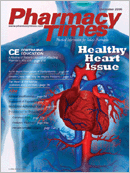Publication
Article
Pharmacy Times
Eight Tips for an Effective Root Cause Analysis
Author(s):
Root cause analysis (RCA), championedby the Joint Commissionon the Accreditation of HealthcareOrganizations (JCAHO) since 1997for sentinel-event investigation, identifiessystemic factors contributing to failures.A sentinel event is an unanticipatedadverse outcome involving death, seriousphysical or psychological injury, orthe risk of such events (Table 1).1 Sentinelevents, unlike understandable negativepatient care outcomes, never shouldoccur during normal treatment.1
Table 2 describes common settings,types, and outcomes for 3661 sentinelevents reported to JCAHO as of March31, 2006.2
As a problem-solving method, RCApresumes that faulty systems, notpersonal failures, are the root causesunderlying sentinel events. Industrial psychologyand human factors engineeringsciences suggest that poor processescause up to 95% of dire consequences.3RCA leads to system modifications, preventingfuture occurrences.
Proximate and Latent Causes
To elucidate failures, RCA distinguishesproximate, apparent causes from latent,underlying system causes. In health care,proximate causes usually are careprocess deficiencies4: human error (eg,dose miscalculation), malfunctioningequipment, or failure to effect action.Latent causes are underlying organizationalprocesses that galvanize proximatecauses (eg, working mandatoryovertime in an understaffed pharmacy).Identifying latent causes involves asking"Why?" repeatedly until organizationalprocesses are revealed. (The sidebardescribes a simplified RCA.)
Tips for Conducting a Credible RCA
Conducting an RCA takes days toweeks and should be completed withoutdelay, or within 45 days of a sentinelevent at JCAHO-accredited sites. Thesetips maximize efficiency and ensurecreditability.
1. Team composition. The multidisciplinaryRCA team, facilitated by a processexpert, must be trained in RCA technique,preferably in advance, and mustexclude staff members involved with thesentinel-event victim's care. Also, theteam needs a recorder and a teamleader (a subject matter expert who providesrelevant technical information).5
2. Data collection establishes what happened.The most time-consuming part ofthe RCA, data collection must have ascope and depth sufficient to answer anyquestion the team raises. Usually a qualityimprovement team or arisk manager gathersdata, using blameless,open-ended questionswhen interviewing, refrainingfrom valuejudgments.
3. Incident analysisfollows. Team membersreview what happenedduring the incidentand in the systemand proceed tohow it happened. Then the team musttry to understand why it happened, withoutfocusing on individual performance.6
4. Risk points are discrete points onthe care continuum (involving care activitiesand associated staff members).Identifying risk points and their potentialcontribution assists with the analysis.3The five "Rs" for medication?right drug,right dose, right route, right time, rightpatient?are risk points. The relatedphysician, pharmacist, and medicationnurse also are risk points.
Barrier analysis helps identify systemicfaulty or nonexistent safeguards orunnecessary risks, pointing to potentialcorrective actions.5 The inability to selecta patient record without verifying theentire name is a barrier.
5. Causal pathways are organizedschematically, positioned from incidentspecificto organization-specific processes.In the example in the sidebar, specificcauses involved nurse orientation andpatient-identification procedures, but thebroader organizational causes involvedunderstaffing. Normally, multiple problemissues will cross various systems. Patient-identificationprocedures, for example,involve staffing, training, procedures,supervision, and technology use. RCAsidentifying only a few systemic factorsprobably are flawed.
6. Corrective action plan. The team'scorrective action recommendationsshould be unfettered by cost or complexity.Leadership will review proposed correctiveactions thoroughly, make fundingdecisions, and ensure that correcting 1root cause does not create another.7
7. Report. The team summarizes theRCA, beginning with summaries of what,how, and why the event occurred. Manyorganizations use a table highlightingcontributing factors, corrective actionrecommendations, due dates, and staffmembers responsible for monitoring.Visuals also help. The fishbone-shapeddiagram (Figure) effectively identifiescausal pathways. The fish's head is theproblem (result), and each bone representsa causal pathway. Major systemfactors (details), such as equipment,environment, or skills, are noted on thebones.
8. Know when to stop. RCA is theoreticallyendless, because there isalways 1 more "why." Albeit a judgmentcall, the team can stop when themembers concur that they have identifiedcausal pathways that, if corrected,would minimize or prevent a futureoccurrence. They must limit systemicaspects to those that managementcan control. For example,the answer to "Why are pharmacypositions hard to fill?" (inthe sidebar) also could haveincluded "There is a nationalshortage." Although true, thissituation is beyond management'scontrol.
Never Events, Near Misses
Medication errors fall amongthe top 5 reported sentinelevents. They were recentlylabeled as "never events" bythe Centers for Medicare &Medicaid Services. Whereasmany "near misses" are notclassified as sentinel or neverevents, organizations shouldaddress them nonetheless. Ifpatient medication allergiesare missing from the recordand pharmacists intercept severalcontraindicated orders, aninternal RCA might uncoverproblems and improve informationsharing, patient assessment,and on-line orderingpathways.
Final Thought
RCA is a qualitative technique,devoid of statisticalattire. Although RCA teamscannot determine with totalcertainty whether the adverseoutcome would have beenavoided had the corrected systemsbeen in place, doing nothingin response to unexpectedevents is not an option.
Dr. Zanni is a psychologist andhealth-systems consultant based inAlexandria,Va.
For a list of references, send astamped, self-addressed envelope to:References Department, Attn. A.Rybovic, Pharmacy Times, AscendMedia Healthcare, 103 CollegeRoad East, Princeton, NJ 08540; orsend an e-mail request to:arybovic@ascendmedia.com.







